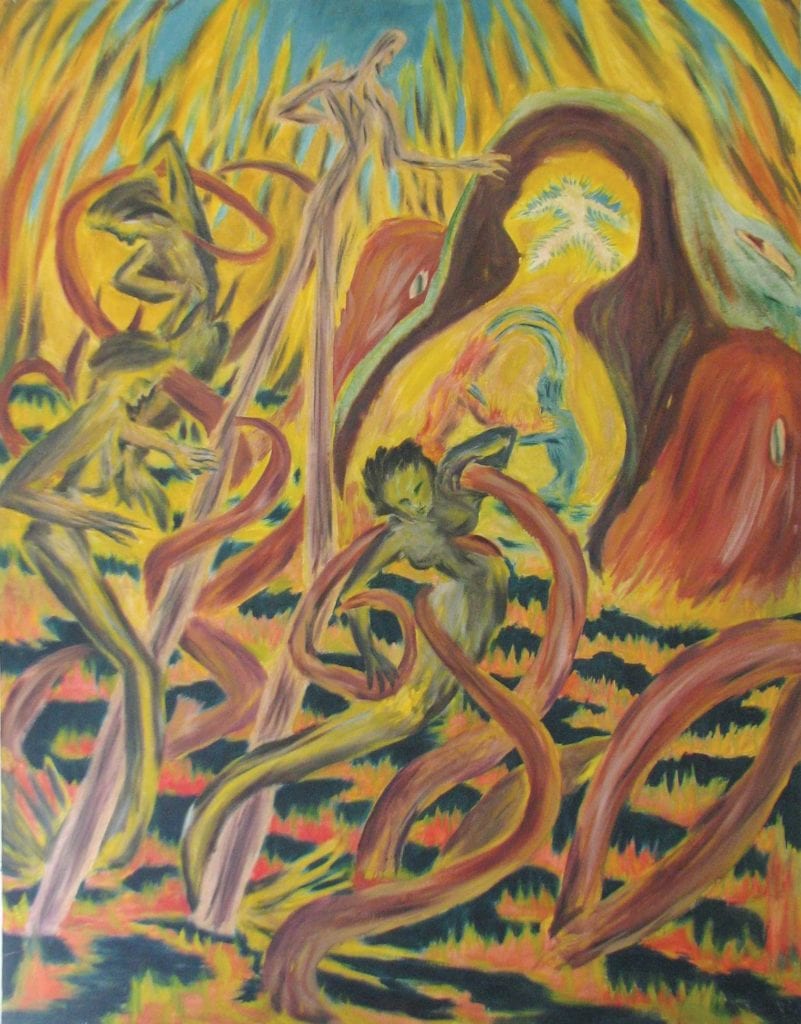
The Boston art world celebrated the life and work of local artist Magnus Johnstone at the Nave Gallery in Somerville last week. A visual artist and DJ on WZBC 90.3 FM and WMBR 88.1 FM, Johnstone left behind a powerful legacy when he died at age 60 in 2013. That legacy includes over 80 large canvases and dozens of smaller works. The works were showcased March 9–17 at the Nave exhibition, where visitors could browse and buy to the sounds of music Johnstone loved.
“The sheer volume of work Magnus produced puts him at the top tier of prolific solo artists of his era in the Boston community,” says Mark Flynn, a longtime friend and colleague of Johnstone’s. “His affinity for, and awareness of those considered ‘outsider artists’ influenced his pursuit of his unique, and for many off-putting, style of drawing and his painting technique.”
Johnstone’s works are frenetic and vibrant, depicting amorphic figures in abstract landscapes. His March 1991 piece “War” features figures that appear to be a blend of human, reptile and machine marching forward bearing weapons. The landscape around them is a swirl of colorful brushstrokes all moving in the same direction as the marchers, creating a dynamic, ominous sense of rapid motion. Other works feature historical and religious themes and even organic shapes modeled off bacteria under a microscope. Johnstone’s work displays an ability to blend time, space, color and species in a way that appears effortless. Boston hip-hop historian Brian Coleman, who helped put the exhibit together, says “It’s like turning the page of a book and constantly being surprised and impressed— and definitely not having any idea what you’ll get five pages from now.”
Coleman says he hopes to rectify the fact that Johnstone’s works have been largely unknown for the last 30 years. Johnstone was well known for his contributions to the Boston music scene, particularly his commitment to diverse music in his shows, “Mecca,” which featured music of the Arab world, and “Aliens’ Corner,” featuring pan-African music. But his paintings reflect an equally energetic artistic inner life. “Magnus was a unique person, a true force of nature, and on a personal level I always marveled at his approach to life,” says Coleman. “He was a true original, he was always ahead of the curve, whether it was music or art.”
Proceeds from the Somerville exhibition will go towards storing, maintaining and marketing Johnstone’s remaining work. Ultimately Coleman’s greatest goal is to continue the artist’s legacy. “I want people to remember him and to revisit his work,” says Coleman. “In our world where digital visions and small screens are replacing reality for too many people, there is just nothing like seeing a film on a big screen or a large-scale painting up close.”









